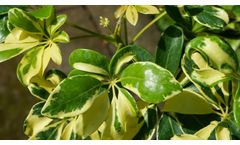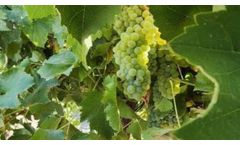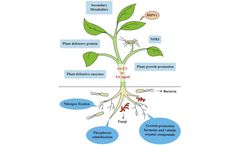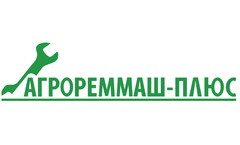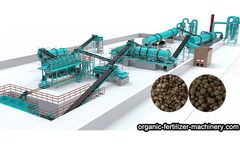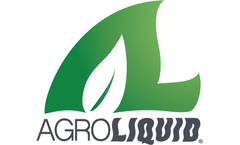Foliar Application Articles & Analysis
18 articles found
Citrus greening, more widely recognized as Huanglongbing (HLB), is caused by the bacterium Candidatus Liberibacter asiaticus, has emerged as one of the most destructive threats to citrus production worldwide. Since 2019, this disease has ravaged citrus industries worldwide, destroying approximately 75% of orange and 85% of grapefruit production in affected regions. It severely stunts tree ...
The study was designed to monitor sour rot and crop yields with four applications during the growing season (March to September). The applications consisted of 1) control, 2) soil irrigation, 3) foliar spray, 4) soil irrigation/foliar spray. For the soil irrigation, they used a 78 mg/l of JC 9465. For the foliar ...
It also Induces resistance to disease stress. Foliar applications of SA affect several aspects of plant growth and development1 2 3. ...
Dosage of liquid fertilizers Liquid mineral fertilizers have already proven their advantages over granular fertilizers, these namely are prolonged action and maximum absorption of the active substance. So here is the question, what is the most effective way of using liquid fertilizers? Taking into consideration the reasons for transition to soil fertilizers, agronomists and farmers often point ...
Tackling Malawi's Hidden Hunger through Selenium and Iodine biofortification to green vegetables and conservation agriculture (CA) field crops Introduction In sub-Saharan Africa, micronutrient deficiencies are common in poor and rural areas, due to over-farmed, depleted soils and restricted diets. In Malawi, three-quarters of the population are selenium-deficient, which can lead to weakened ...
Abstract A field experiment was conducted during the Kharif season of 2018-19 at Rice Research Station Bahawalnagar on the calcareous sandy loam soil to assess the effect of foliar application of boron on growth & yield components of rice varieties (Kissan & Punjab Basmati 2016).The foliar application of boron aqueous ...
In the fall, I’m able to gather harvest data and compare planting and applications with yield to see what worked and what didn’t. Once you know what you’re looking for, the answer is just a few clicks away. ...
Bio-organic fertilizer contains a large number of beneficial microorganisms, and the application effect is remarkable. Organic fertilizer type (1) Crop straw decomposition agent, livestock and poultry manure, organic waste starter. (2) Microbial inoculants refer to liquid viable bacterial products produced by liquid fermentation of known beneficial microorganisms or solid ...
In industrial farming, micronutrients have to be added—as foliar sprays, seed treatments, or soil applications. By monitoring aspects of plant growth that nutrients influence, it is possible to identify deficiency and suggest remedies. Let us consider some scenarios where different tools were used as examples. LAI Tests for Foliar ...
According to a review by Dr. Crocombe, hand-held spectrometers have historically been used by only small groups of people, such as analytical and drug companies. These days, spectroscopy is available in simple low cost devices for a multitude of applications for scientists and non-scientists alike. One of the most prominent uses of spectroscopy has been the use of the technology on leaves for ...
Inputs and costs All treated plots were given two applications of PK MAXX+ at 2 litres per hectare. The first at early tuber bulking and the second 14-21 days later with a total additional product cost of less than £40 per hectare. How it works Every nutrient has the potential to limit yield so PK MAXX+ contains supplements of both NPK and key micronutrients such as ...
Low clay content and sandy soils restrict levels of extractable Potassium and imbalanced levels of other elements such as Calcium and Magnesium can also limit availability and uptake by the crop. Foliar Application of Potassium Foliar applications can therefore be an option to supplement Potassium in periods of high demand or ...
Meanwhile back at the NCRS base, Stephanie and Jeff have been making some foliar applications, but now are loading up to do something different. ...
The SWEC and t-ZR were applied to the foliage of ‘L-93’ creeping bentgrass four times (14-d interval) at 1, 10, and 100 µM. After the second application, the grass was subjected to heat stress for 49 d at 35/25°C (day/night) in the initial experiment or 38/28°C (day/night) in the second experiment. ...
The objective of this study was to determine whether foliar application of an ethylene synthesis inhibitor (aminoethoxyvinylglycine, AVG) and a synthetic cytokinin (trans-zeatin riboside, t-ZR) would enhance creeping bentgrass (Agrostis stolonifera L.) tolerance to heat stress associated with the suppression of leaf senescence. ...
One approach being promoted is the use of foliar fungicides, for both foliar pathogen control and nonfungicidal plant physiological effects. ...
Potatoes were grown in fields at the Oregon State University Horticulture Farm with herbicides applied at below recommended field application rates 14 d after emergence (DAE) or at 28 DAE. Plant height was measured before and 14 d after application. Visual foliar injury was rated 14 d after application, and tuber yield and ...
Abstract Experiments to assess the capability of different combinations of iron (Fe) compounds and adjuvants to provide Fe via foliar application to Fe-deficient plants have been carried out. A total of 80 formulations containing (1) one of five Fe-compounds [FeSO4·7H2O, Fe(III)-citrate, Fe(III)-Ethylenediaminetetraacetic acid (EDTA), Fe(III)-Diethylenetriamine ...

